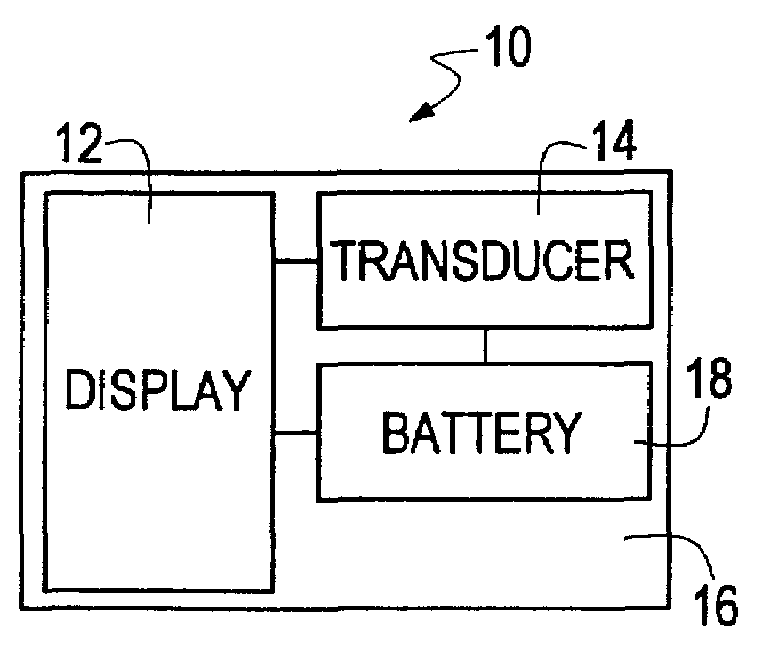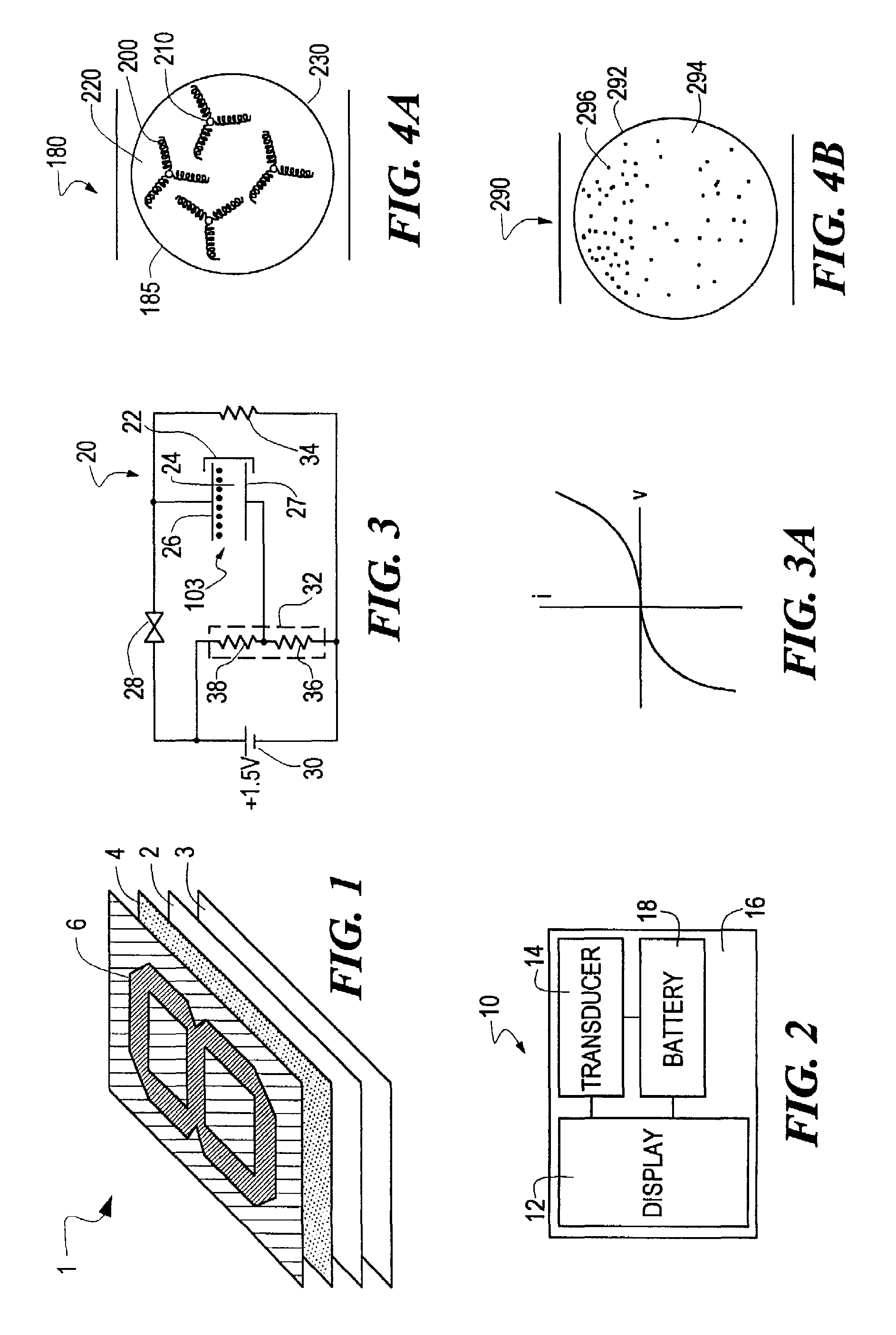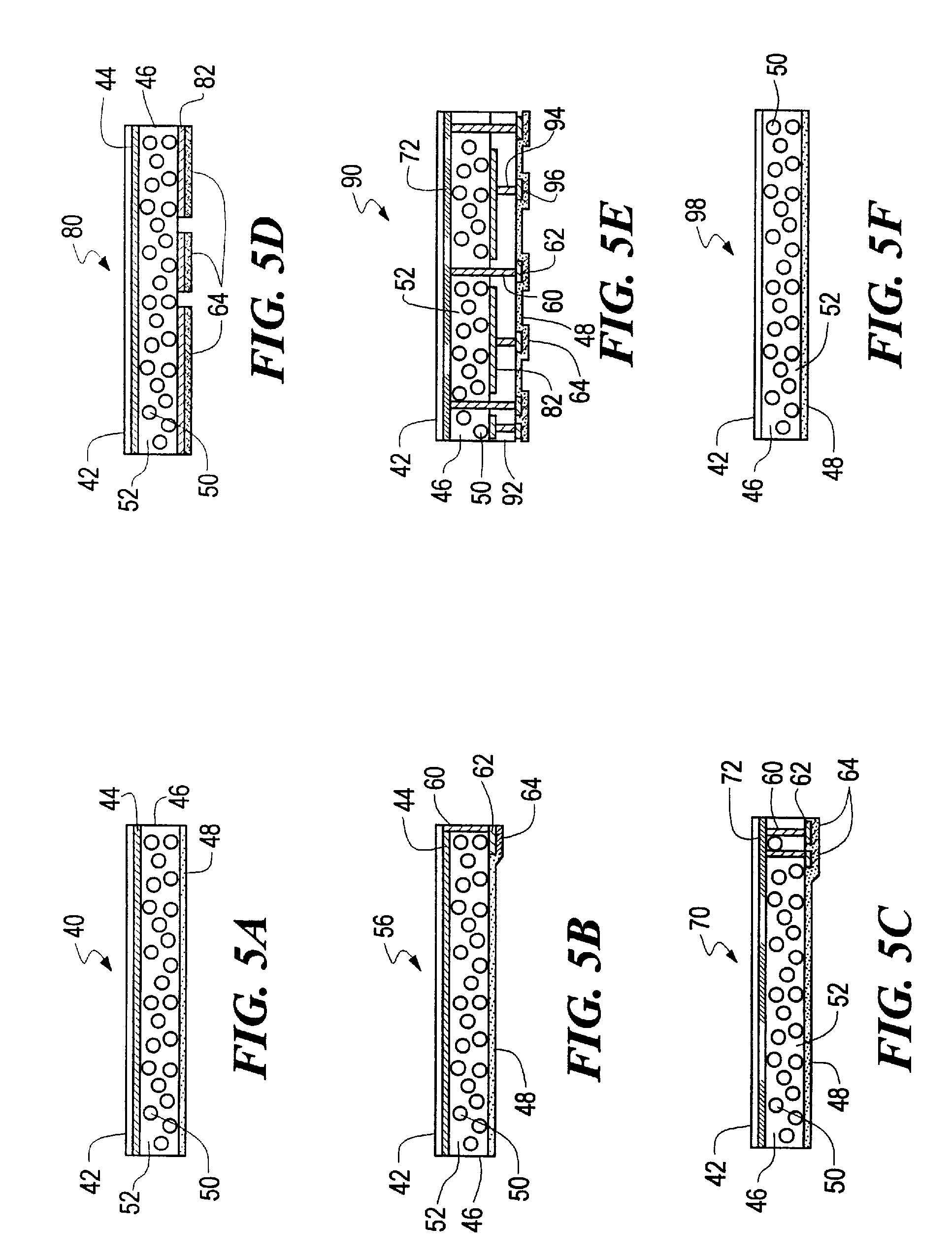Adhesive backed displays
a technology of adhesive backing and display, which is applied in the field of adhesive backing display, can solve the problems of affecting the incorporation of displays, affecting the degree of flexibility of these displays, and changing the scattering or absorbance so as to achieve high flexibility, and reduce the effect of pdlc and cholesteric films
- Summary
- Abstract
- Description
- Claims
- Application Information
AI Technical Summary
Benefits of technology
Problems solved by technology
Method used
Image
Examples
Embodiment Construction
[0036]According to the present invention, a substrate is provided and an electronic ink is printed onto a first area of the substrate. The present invention takes advantage of the physical properties of an electronic ink which permits a wide range of printing and coating techniques to be used in creating a display. An electronic ink is an optoelectronically active material which comprises at least two phases: an electrophoretic contrast media phase and a coating / binding phase. The electrophoretic phase comprises, in some embodiments, a single species of electrophoretic particles dispersed in a clear or dyed medium, or more than one species of electrophoretic particles having distinct physical and electrical characteristics dispersed in a clear or dyed medium. The coating / binding phase includes, in one embodiment, a polymer matrix that surrounds the electrophoretic phase. In this embodiment, the polymer in the polymeric binder is capable of being dried, crosslinked, or otherwise cure...
PUM
| Property | Measurement | Unit |
|---|---|---|
| diameters | aaaaa | aaaaa |
| thickness | aaaaa | aaaaa |
| average diameter | aaaaa | aaaaa |
Abstract
Description
Claims
Application Information
 Login to View More
Login to View More - R&D
- Intellectual Property
- Life Sciences
- Materials
- Tech Scout
- Unparalleled Data Quality
- Higher Quality Content
- 60% Fewer Hallucinations
Browse by: Latest US Patents, China's latest patents, Technical Efficacy Thesaurus, Application Domain, Technology Topic, Popular Technical Reports.
© 2025 PatSnap. All rights reserved.Legal|Privacy policy|Modern Slavery Act Transparency Statement|Sitemap|About US| Contact US: help@patsnap.com



